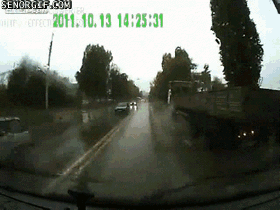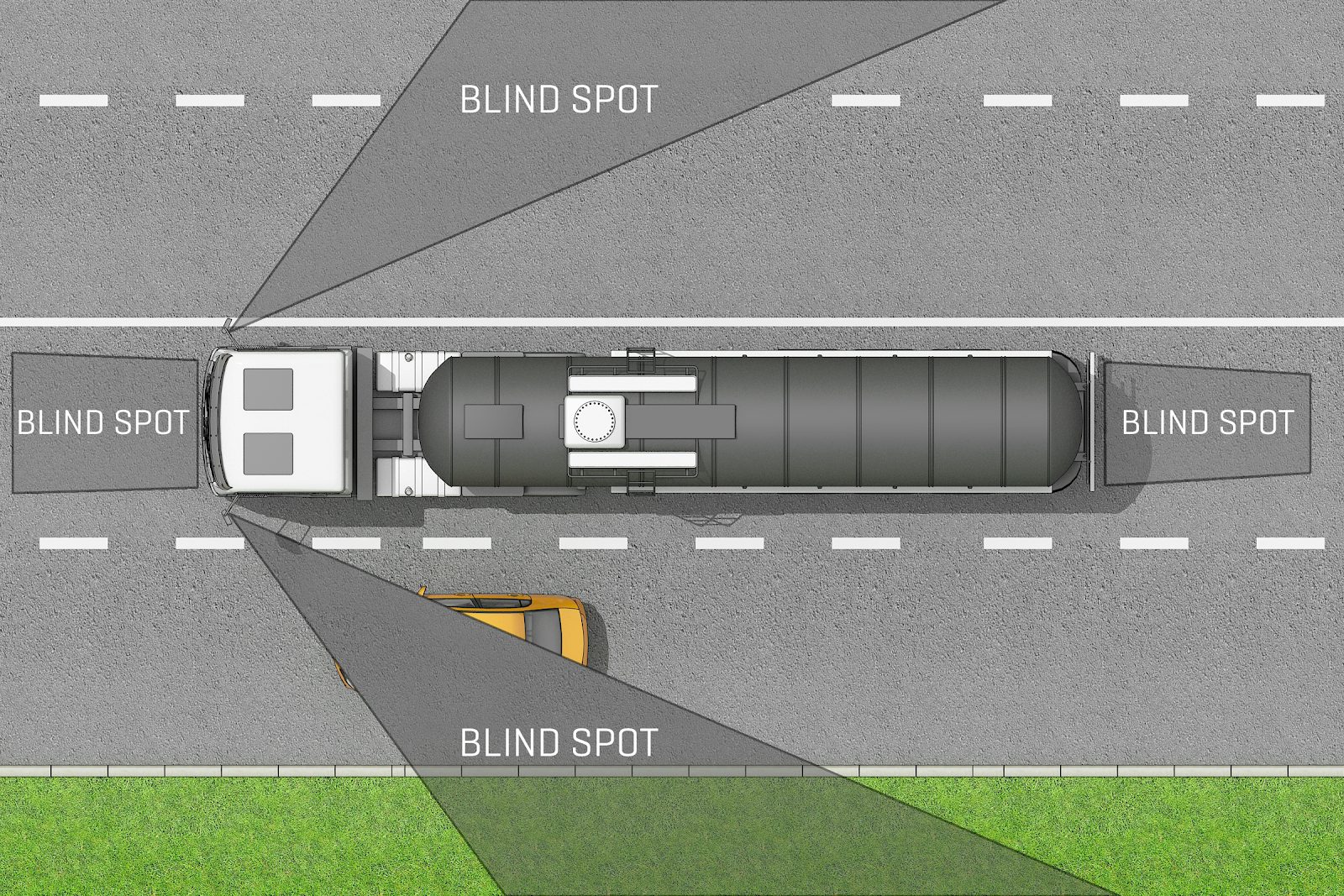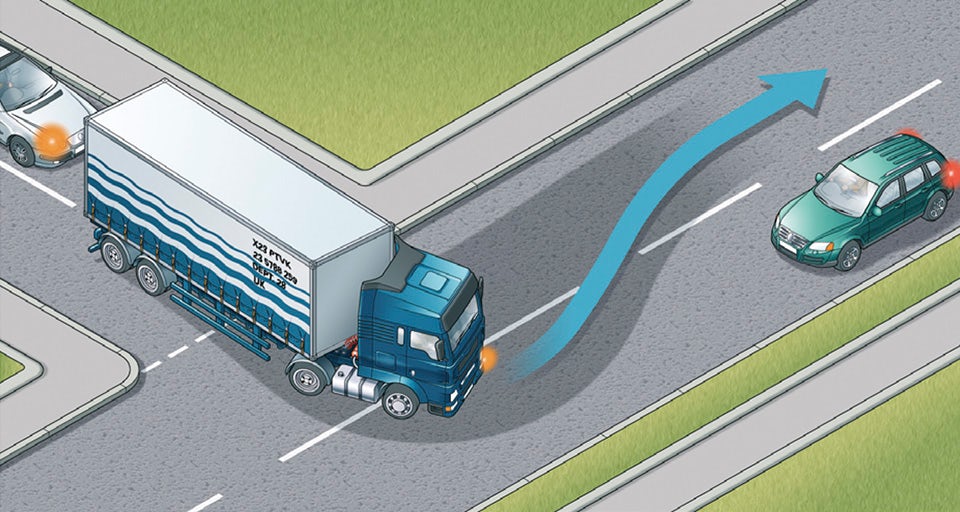
Large vehicles, such as buses and trucks are often considerably longer, heavier and more powerful than standard vehicles and need to be treated with safety in mind. Crashes with lorries and other large vehicles are more likely to cause serious injury or death.
When encountering large vehicles:
- Large vehicles need a longer safety margin than standard vehicles. Never pull in closely in front of a heavy vehicle at traffic lights or in the traffic flow - they need a long distance to stop and may be unable to stop safely if you do
- Due to their weight a truck or large vehicle will take more time to accelerate, especially when starting or going uphill. Be prepared to adapt your driving by reducing speed etc.
- Assume that they will need more than their own lane to turn. They may need to cut a corner when turning at an intersection
- Be extra careful after dark or in hazardous conditions (e.g. water on the road can splatter your windshield as you pass a large vehicle, reducing your vision to almost zero)

Blind spots

A general rule is that if you are not able to see the truck’s external mirrors, the driver can’t see you. Get out of the blind spot by either overtaking, if safe, or by pulling back to where you can be seen.
A truck driver may not be able to see you or be able to stop if you try to pass them while they are turning, so wait until they have completed their turn before passing.
Overtaking large vehicles

Overtaking large vehicles is more difficult. You should
- drop back. This will increase your ability to see ahead and should allow the driver of the large vehicle to see you in their mirrors. Getting too close to large vehicles will obscure your view of the road ahead
- make sure that you have enough room to complete your overtaking manoeuvre before committing yourself. It takes longer to pass a large vehicle. If in doubt do not overtake
- not assume you can follow a vehicle ahead which is overtaking a long vehicle. If a problem develops, they may abort overtaking and pull back in
- not cut in too quickly after overtaking, otherwise the long vehicle might have to brake to keep an adequate safety distance.
Give extra road space to large vehicles

Large vehicles may need extra road space to turn or to deal with a hazard that you are not able to see. If you are following a large vehicle, such as a bus or articulated lorry, be aware that the driver may not be able to see you in the mirrors. Be prepared to stop and wait if it needs room or time to turn.
‘Abnormal Load’ vehicles
‘Abnormal Load’ vehicles are slower, take up more road space (sometimes more than one lane) and take longer to stop. They often pull over now and then to allow other traffic to pass.
